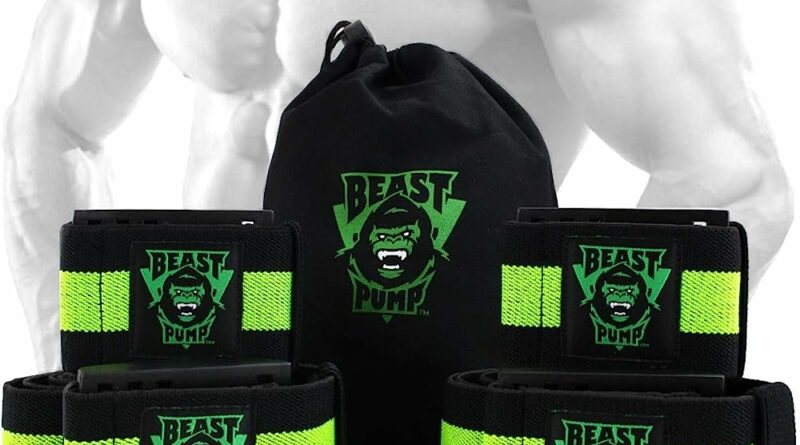Unleashing Ultimate Muscle Growth with Push Pull Legs Hypertrophy
Push pull legs hypertrophy is a workout routine aimed at building muscle mass by dividing the workouts into pushing, pulling, and leg movements. This type of routine is often used by bodybuilders and athletes for maximum muscle gain potential.
Push-pull-legs (ppl) is a highly effective training split designed to optimally stimulate muscle growth. This routine consists of three training sessions: push, pull, and legs. During a push workout, emphasis is placed on exercises that target the chest, shoulders, and triceps.
A pull workout primarily works the back, biceps, and rear delts. Meanwhile, the legs workout focuses on leg muscles such as the quads, hamstrings, and calves. By separating muscle groups into push, pull, and legs, each muscle group is given the full attention and recovery time it needs to grow. In this article, we will discuss the mechanics and benefits of the ppl routine, and share tips for a successful and effective training split.

Credit: exercisewithstyle.com
What Is Ppl Hypertrophy Training?
Ppl hypertrophy training is a type of workout designed to increase muscle mass and strength. This training involves three main exercises- push, pull and legs. These exercises are done in a specific order, with a focus on a particular muscle group.
Ppl hypertrophy training can help you improve your overall strength and muscle mass. Benefits of this training include increased muscle size, improved muscle endurance, and an overall better physique. To successfully complete this training, it is important to follow a strict routine and gradually increase your weights.
With consistent effort and proper nutrition, ppl hypertrophy training can bring about significant changes in your body composition. So, if you’re looking to improve your strength and physique, give ppl hypertrophy training a try today!
Understanding Muscle Hypertrophy
Muscle hypertrophy is the growth and increase in size of muscles. This happens through the progressive overload of exercise. There are two different types of muscle hypertrophy: myofibrillar and sarcoplasmic. Myofibrillar hypertrophy increases the number of myofibrils in the muscle while sarcoplasmic hypertrophy increases the amount of fluid and nutrients stored within the muscle cell.
Different types of exercise affect muscle growth differently. For example, resistance training and compound exercises are more effective for muscle hypertrophy than cardio. Additionally, exercises that focus on eccentric contractions, like negatives, can also contribute to muscle growth. Ultimately, a combination of different types of exercises and a well-rounded training plan can help maximize muscle hypertrophy.
Effective Muscle Stimulation
Muscle stimulation is critical for hypertrophy growth. Effective muscle stimulation can be achieved through compound and isolation exercises. Compound exercises target multiple muscle groups simultaneously while isolation exercises target specific muscles. Both types of exercises are necessary for comprehensive muscle growth.
Compound exercises like squats, bench presses and deadlifts are fundamental to any strength training routine. Whereas, isolation exercises like bicep curls and side lateral raises are perfect for targeting specific muscle groups. By differentiating between these exercise types and incorporating them into your workout routine, you can create an effective, well-rounded program for hypertrophy growth.
So, make sure to switch between these exercises regularly to shock your muscles and keep them growing.
Time-Efficient Design
A push pull legs (ppl) hypertrophy is a time-efficient design that can help build muscle mass in a few weeks. This 3-day ppl workout schedule incorporates progressive overload, which helps stimulate muscle growth by gradually increasing resistance. To start, perform a push workout on day 1, a pull workout on day 2, and a legs workout on day 3.
Keep in mind that the intensity of each exercise should be increased as you go. For instance, aim to lift heavier weights, and include more sets and reps as you proceed. This way, your muscles will be challenged, making it possible for you to reach hypertrophy, which in turn will result in muscle gain.
Incorporating progressive overload in your ppl workout routine is one of the best ways to attain muscle growth and strength in a few weeks.
Push Day Exercises
If you’re looking to build muscle on your push day, there are several exercises that you can do to achieve hypertrophy. When it comes to the optimal reps, sets, and rest periods for push day, it’s important to strike a balance between challenging yourself and avoiding injury.
Some of the best push day exercises for hypertrophy include bench press, overhead press, and push-ups. It’s recommended to perform 3-4 sets of 8-12 reps with a 30-60 second rest period between sets. Additionally, incorporating variations of these exercises, such as incline bench press or dumbbell flyes, can help target different areas of your chest, shoulders, and triceps.
Remember to listen to your body and adjust the weight and reps accordingly to optimize your push day workouts.
Pull Day Exercises
Looking to build a muscular back and biceps? Then you need to nail your pull day exercises for maximum hypertrophy. Optimal reps, sets, and rest periods are key to achieving progress, so consider these carefully. Some of the top exercises for muscle growth include pull-ups, rows, and pulldowns, all of which target different areas of the back and arms.
Varying your grip and using different equipment can help to keep your workouts fresh and challenging. With a well-designed program, consistent effort, and attention to recovery, you can strengthen and grow your upper body like never before. So, pick your exercises, set your reps and sets, and get ready to pull your way to new levels of muscularity and strength!
Frequently Asked Questions Of Push Pull Legs Hypertrophy
What Is Push Pull Legs (Ppl) Training?
Push pull legs (ppl) training is a weightlifting split that involves training the body in three major groups: pushing muscles, pulling muscles, and legs. The pushing muscles include chest, shoulders, and triceps; the pulling muscles are back and biceps, while the legs include calves, hamstrings, and quadriceps.
Each group gets worked out once or twice a week, depending on the routine and schedule.
Can Ppl Workouts Help In Muscle Hypertrophy?
Yes, ppl workouts can help in muscle hypertrophy. Ppl puts a lot of emphasis on compound, multi-joint exercises that target major muscle groups. Additionally, the high volume of ppl training provides the stimulus for muscle hypertrophy. Ppl supports muscle growth and increases additional strength for muscle mass.
How Often Should I Do Ppl Exercises?
How often you do ppl exercises depends on your fitness level, goals and your training intensity. However, beginners should train for a minimum of 2-3 times per week, and advanced trainees can train for 4-6 days per week with moderate to high intensity.
You should choose a comfortable frequency, recovery and rest are essential for safety.
Can Ppl Exercises Burn Fat Too?
Yes, ppl exercises can burn fat. Ppl exercises are typically compound movements that require a vast amount of energy to complete, and hence, helps in burning calories. Ppl workouts can help you build lean muscle tissue that enhances your metabolic rate.
You should add cardio or high-intensity interspersed when focused on fat-loss.
Which Exercises Are Commonly Practised In Ppl Workouts?
Ppl workouts consist of various exercises. The basic push exercises are bench press, overhead press, and push-ups. The most famous pull exercises include lat pulldowns, chin-ups, and rows. The leg exercises include squats, lunges, and calf raises. There is great emphasis on progressive overload and consistent training.
Conclusion
After discussing the benefits of the push, pull, and legs hypertrophy training split, we can conclude that this is an effective way to improve muscle growth and strength. The key is to focus on progressive overload and proper form while incorporating a variety of exercises for each muscle group.
By using compound lifts and isolation movements, you can target specific areas while also engaging multiple muscles at once. Remember to prioritize recovery by getting enough rest and fueling your body with a balanced diet. Whether you are a beginner or an advanced lifter, push, pull, and legs hypertrophy training can help you achieve your fitness goals.
Give it a try and see the results for yourself. Keep in mind that consistency, dedication, and patience are the keys to success in any training program.




